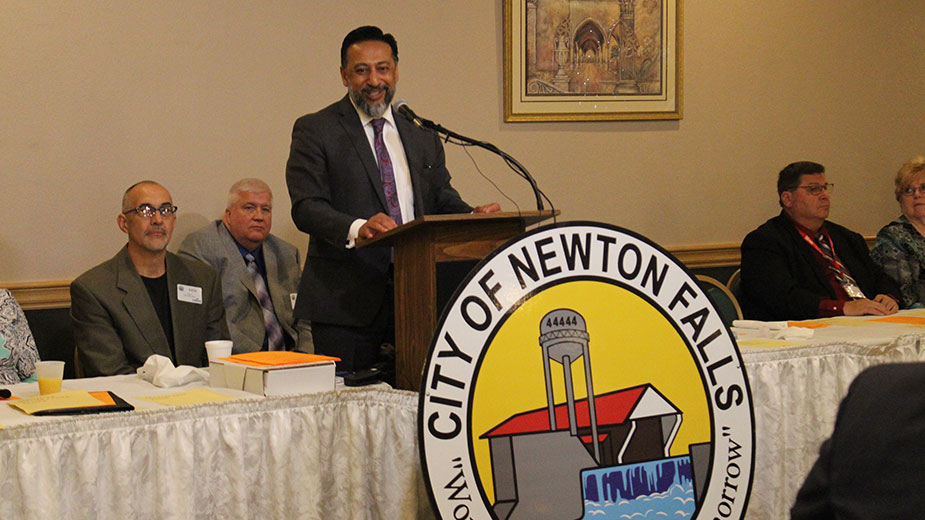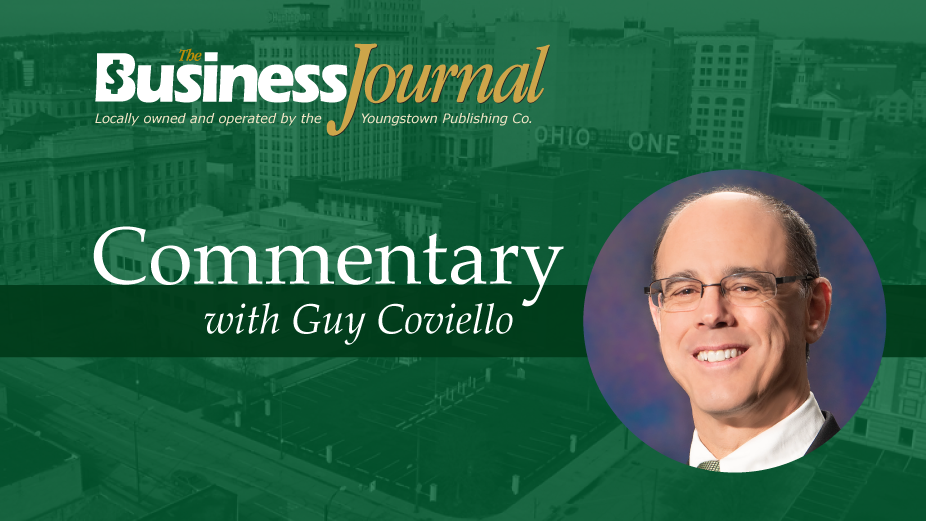Turnpike Boss Aims to Boost Voltage Valley
NEWTON FALLS, Ohio – The Ohio Turnpike and infrastructure Commission is working with researchers and local officials to implement in-road charging technology for electric vehicles, the commission’s executive director said Monday.
Ferzan Ahmed, who has been director of the commission just over two years, was the featured speaker at the Youngstown/Warren Regional Chamber’s latest Lattes & Legislators program, which was held at Roby Lee’s Restaurant & Banquet Center.
The commission is working with local officials to help secure grant funds for the proposed “smart logistics hub” being developed to coincide with the “Voltage Valley” developments in Lordstown.
“Our hope is that we’re going to get beyond planning and find a project that we can do together,” Ahmed said. “One of the projects that we are aspiring toward is a future electrification project.”
As electric vehicles become more prevalent – right now only about 1% of vehicles in Ohio are electric but the major auto manufactures have announced plans for EVs – charging will become a “huge logistical issue that we need to tackle,” Ahmed said.
Charging stations for electric vehicles already are installed at four of the 14 service plazas the turnpike operates, Ahmed said. In-road or inline charging is a “nascent technology” that is being piloted in Sweden, and the turnpike commission and local leaders are working with the University of Utah, the lead U.S. researcher of in-road or in-line charging.
“Our goal is that perhaps in this part of the state we can implement the first inline charging,” he said.
Inline charging is being discussed near the Lordstown Motors Corp. plant, Lordstown Mayor Arno Hill said. It is begin considered either as part of the proposed smart logistics corridor to coincide with or as a standalone project.
“You can be charging your vehicle as you’re driving down the street and pay for it through your EZPass,” Hill said. “It’s quite innovative and we’d like to be on the breaking edge of that.”
Local partners are in the process of refining an earlier application that was rejected to the federal Better Utilizing Investments to Leverage Development – or Build – grant program to support the logistics hub, said Jim Kinnick, executive director of Eastgate Regional Council of Governments, one of the partners.
As part of a modernization initiative, the commission will be eliminating a total of nine low-volume toll plazas at the east and west ends of the turnpike, as it implements open-road tolling, which combines the traditional gated system that Ohio now has with electronic tolling. Open-road tolling utilizes a combination of transponder systems like EZPass and cameras to capture license plates of vehicles not equipped with such equipment and bills the vehicle’s owner later by mail.
Among the toll booths to be eliminated are five between Warren and Pennsylvania. Workers would be reassigned elsewhere within the turnpike system.
Westbound motorists from Pennsylvania will be charged once as they enter the turnpike’s Eastgate plaza headed west until they reach the new mainline barrier plaza at Mile 211, but will not be charged again as they make the return trip, similar to how motorists are charged as they enter Pennsylvania from Ohio.
Maintaining and staffing the low-volume plazas costs the state more than it collects in tolls, Ahmed said. As a consequence, people who utilize the access between the decommissioned toll plazas will be utilizing them at no charge, a situation Hill said he intends to highlight as he seeks to recruit business to Lordstown.
“This could be a selling feature,” he said. “We have a lot of competitive advantages and this would be another one to the plus side.”
Ahmed said he is working with legislators to implement legislation permitting the turnpike to utilize the cameras and collect tolls from individuals who don’t want to pay them. The goal is to have the legislation in place by the end of the year.
“The new toll collections system will go into effect in the beginning of 2023,” he said. “It is being designed right now and there are many construction projects that have started also to make that happen.”
Ahmed also detailed tine impact of the coronavirus pandemic on the turnpike. Last year, passenger traffic was down 26.5% — including a 70% drop in April 2020 — and the turnpike’s $355 million budget took a 38% hit, he reported.
“Truck traffic was pretty even,” boosted by increased online shopping, he said. Passenger traffic is still down around 17% but truck traffic is up by nearly double digits. “Freight has pretty much been the driver of the economy during the pandemic,” he said.
Pictured: Ferzan Ahmed, executive director of the Ohio Turnpike and Infrastructure Commission.
Copyright 2024 The Business Journal, Youngstown, Ohio.



